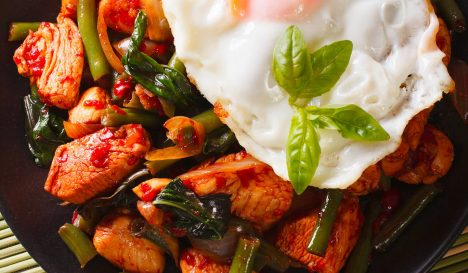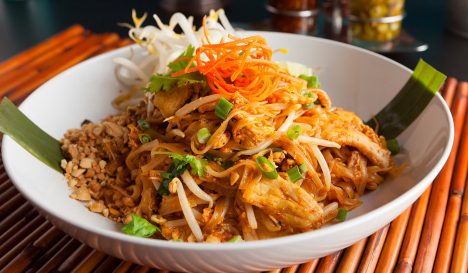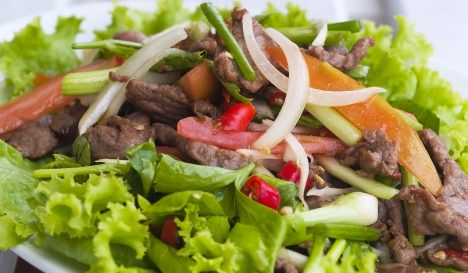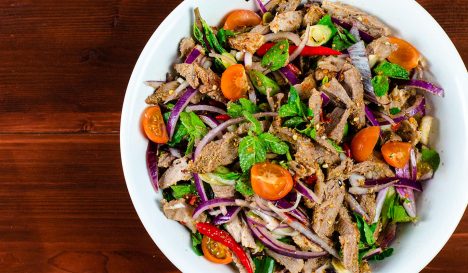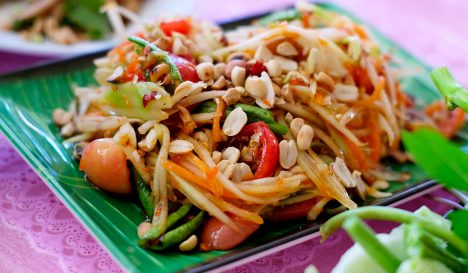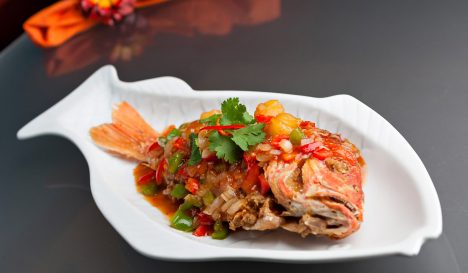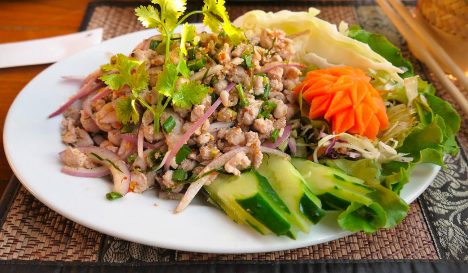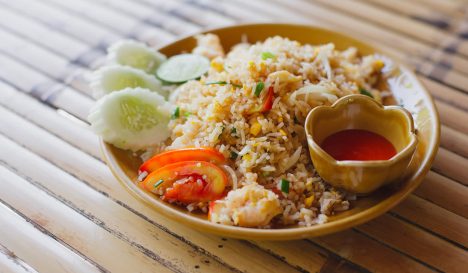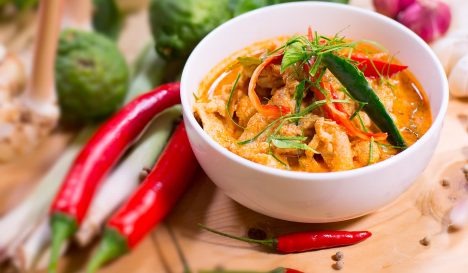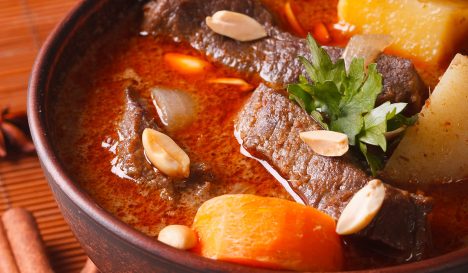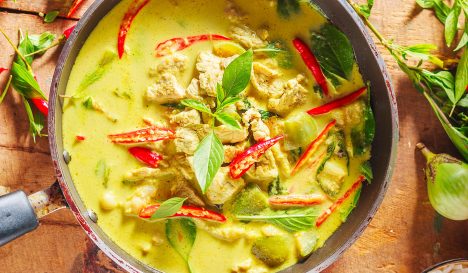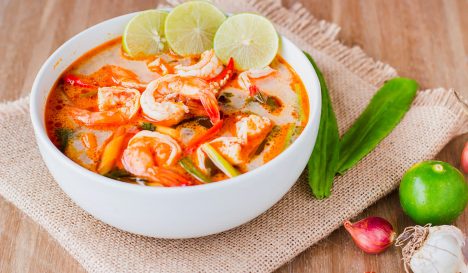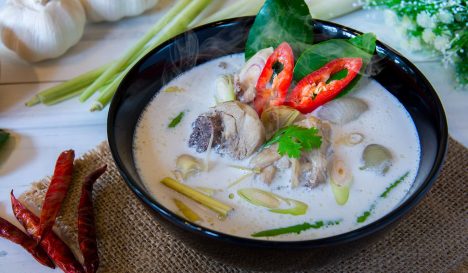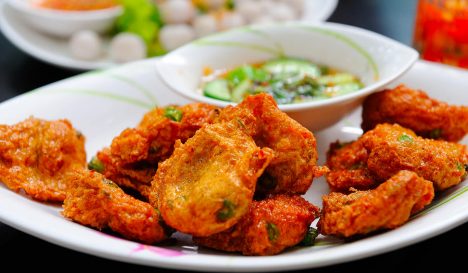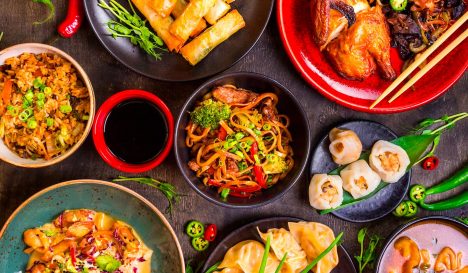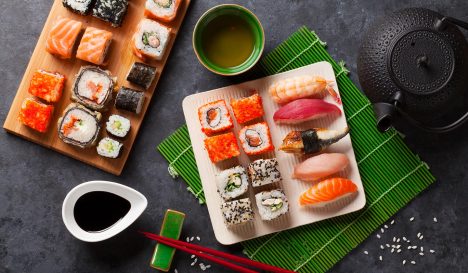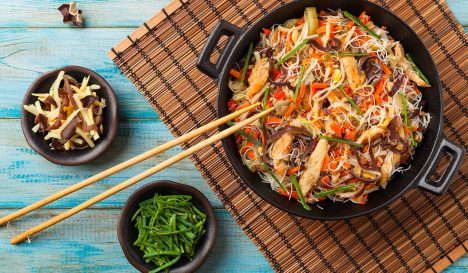Thai cuisine
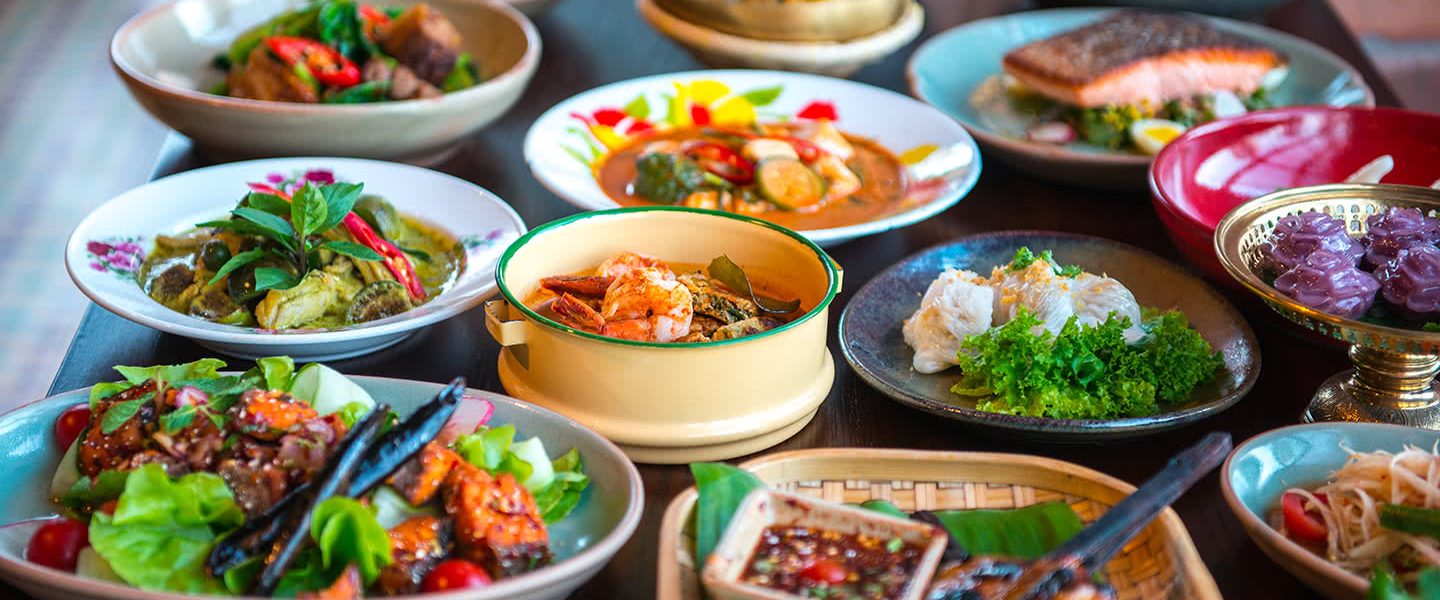
Thai cuisine is incredibly playful and inventive. Dishes are carefully put together to stimulate all the senses, with contrasting flavours, fragrant aromas and plenty of colour and texture all signatures of Thai cuisine. The basic elements of salty, sour, sweet and spicy are rearranged endlessly in countless configurations, with each dish hitting its own balance. Sometimes, this balance isn’t specific to one dish, but rather a meal as a whole.
- Foreign influences
- Typical ingredients
- How do you pronounce that?
- Top table manners
- Thai cuisine in Canada
- For beginners
- Also worth a try...
- Skip's recommended Thai Restaurant
- Discover these Thai dishes
Foreign influences
Although Thailand has always been independent, there are still foreign influences to be found in the kitchen. Red, green and massaman curry are reminiscent of the rich flavour profiles of Indian cuisine, while in the north of the country, there’s such an abundance of noodle soups you might think you’ve stepped into China.
The geography of Thailand has also left its mark on its cuisine. Thailand has no conventional winter or summer, with temperatures remaining consistently high. However, there are dry, wet and extra warm periods. The north suffers the longest dry period, meaning there’s only a single rice harvest annually. Instead, substitutes like sticky rice, salt-baked dishes and insects are consumed in this part of the country. In central regions of Thailand, rice is plentiful and populates all manner of dishes, while the south enjoys a rich offering of coconuts, palm sugar and seafood.
Typical ingredients
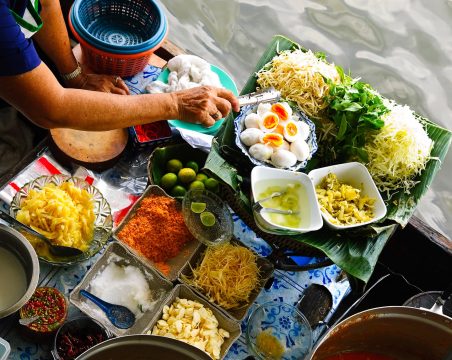
Rice is a staple of Thai cuisine. It’s not that surprising when you consider the country is the biggest exporter of rice in the world. Rice is even ingrained onto the Thai language. A common greeting from one Thai person to another might go something like ‘Have you eaten rice yet?’. It’s a casual hello, but can also serve as an invitation to eat. Rice has been at Thai tables for centuries, except of course when noodles are the flavour of the day. Rice is the neutral counterpart to the fiercely strong flavours of Thai cuisine. In the south, central regions and some parts of the north of the country, people mainly consume khao hom mali, otherwise known as pandan rice. In the north and north-easterly parts of the country, people consume khao nio, otherwise known as sticky rice. Raw sticky rice is often roasted, pulverised into a powder (khao khua) and then sprinkled over dishes such as nam tok.
Four flavourings play a pivotal part in Thai cuisine. These are galangal, lemongrass, fish sauce and Thai peppers. Galangal (kha) is a woody rhizome that resembles ginger superficially, but boasts its own unique taste. Lemongrass (tankrai) lives up to its name, with the ingredient giving a subtle, lemony taste to dishes. Fish sauce (nam pla) is made from fermented fish, most often anchovies, and is a distinct amber in colour. It’s all about that signature salty and fishy flavour here, with Thai fish sauce proving much more salty and stronger in taste than Vietnamese fish sauce. Finally, the Thai chilli pepper (also known as bird’s eye chilli) is a ferocious little pepper that packs plenty of heat. It’s often added to curries and soups coarsely chopped, while infusing the dish with a subtle, but spicy heat. It can also be finely ground to form the base of a red curry paste. When combined with lime juice and fish sauce, it forms prik nam pla, a widely devoured dipping sauce that is served alongside a mass of Thai dishes.
How do you pronounce that?
The Thai language uses a different alphabet that’s very distinct from the ones used in western languages. Translating and pronouncing the names of dishes can prove very difficult. However, there is an official system in place to help us convert Thai words into the Latin alphabet, but it’s not a perfect solution. For example, depending on the intonation you use, the word khao can mean rice, as well as the word for knee or the colour white. Because the Thai language has many unique sounds, it’s not easy for the average English speaker to pronounce the names of dishes correctly. This also explains why some dishes can have four or even five different spellings.
Top table manners
- Dishes are usually shared in Thailand. During meals, numerous bowls and plates are brought to the table containing dishes that complement each other in terms of flavour. Together, they form a whole. Everyone has their own plate with a serving of rice and are free to add helpings of other dishes. These meals are called ahaan kap hkao.
- The Thai rarely eat with chopsticks. Usually, there are spoons and forks on the table. You eat with the spoon and use the fork to move food onto the spoon. Sticks only make an appearance when noodles are on the menu. In the north of the country, where sticky rice is commonplace, meals might be eaten without cutlery entirely. Sticky rice is rolled into bite-sized balls with which other foods are swept up and eaten.
- For inedible parts of the meal, such as shrimp heads, lemongrass stalks and bones, there’s usually a waste bowl in place on the table.
Thai cuisine in Canada
Thai cuisine has long been a Canadian favourite because of its fresh ingredients and intricate balance of salty, spicy, sweet, and sour flavours. With Skip, you’ll find all the best Thai spots in one spot. So you can order delicious dishes from any number of Thai restaurants in your city and have them delivered to your door. Here’s a list of Thai restaurants near you.
Looking for a Skip recommendation? We have a lot of heart for these Thai restaurants in London, Laval, and Regina.
For beginners
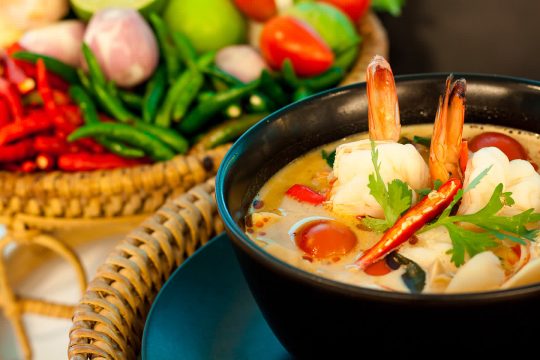
If you’re new to Thai cuisine, the following dishes serve as a great introduction:
Appetiser
Tod man pla – Deep-fried fish biscuits with a fresh cucumber dip.
Soup
Tom yam – A sour, spicy soup that’s a treat for your taste buds.
Salad
Sum tam – Fresh papaya, tomato, lime and peanuts combine for a culinary classic.
Main course
Kaeng panang – A mild, sweet and rich curry dish with a base of coconut sand ground peanuts.
Also worth a try...
Cha yen – Cha yen (pronounced “tsa jen”) is otherwise known as Thai ice tea. It’s a sweet and creamy drink made from tea and is usually chilled. It’s served in restaurants, by street vendors and plenty of other places. You’re often served the orange-coloured drink in a bulging plastic bag tied together with an elastic band, from where the straw sticks out. It is made with Thai black tea, sweetened or unsweetened milk and is poured hot over crushed ice. It’s the perfect cooling complement to spicy dishes.
Skip's recommended Thai Restaurant
If you’re ever in Toronto, Skip recommends checking out Salad King located at 224 Queen St W, Toronto, ON. Salad King operates like such a well-oiled machine, customers are often surprised to learn the restaurant isn’t a franchise. “It’s just a small family business,”said Alan Liu, owner of Salad King. It is famous for its Thai Islamic Noodles, a twist on traditional pad thai that includes a creamy coconut panang curry sauce. This daily special dish isn’t even listed on the menu due to no room left on the page for it (Don’t worry!! We made space for it on Skip.)

